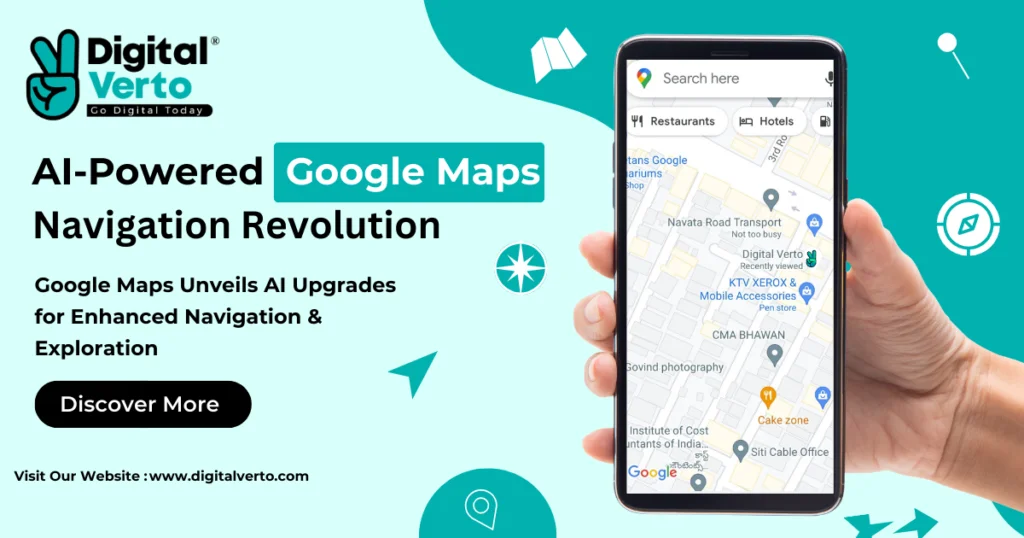Since its introduction, Google Maps has fundamentally changed the way we navigate the world. Its innovative features and constant updates have revolutionized not only how we travel from point A to point B but also how we explore new places and interact with our surroundings. Here’s a look at how Google Maps has revolutionized navigation.

Real-Time Traffic Information
One of the most impactful features of Google Maps is its real-time traffic information. By leveraging data from millions of users, Google Maps provides up-to-the-minute updates on traffic conditions, helping users avoid congestion and find the fastest routes. This capability has significantly reduced travel times and improved the efficiency of daily commutes and long-distance travel.
Turn-by-Turn Navigation
Google Maps’ turn-by-turn navigation has made it easier than ever to reach destinations without getting lost. The app provides clear, step-by-step directions, including voice guidance, which allows drivers and pedestrians to focus on the road or their surroundings rather than constantly checking their phones. This feature has made navigation more accessible and safer for everyone.
Street View
Launched in 2007, Street View has been a game-changer in how we explore and familiarize ourselves with new locations. By offering 360-degree panoramic images of streets and landmarks, Street View allows users to virtually tour neighborhoods, check out potential travel destinations, and even view the exterior of businesses before visiting. This immersive experience has added a new dimension to digital navigation.
Integration with Public Transportation
Google Maps has integrated detailed public transportation information for cities worldwide, making it easier for users to plan trips involving buses, trains, trams, and subways. The app provides schedules, route options, and real-time updates on transit conditions. This integration has made public transportation more user-friendly and accessible, encouraging more people to use these services.
Offline Maps
The ability to download offline maps has been particularly beneficial for travelers and those in areas with limited internet connectivity. Users can download maps of specific regions and access them without an internet connection, ensuring that they can still navigate and find their way even when offline. This feature has made Google Maps a reliable tool for global travelers.
Personalized Recommendations
Google Maps offers personalized recommendations based on user preferences and search history. By analyzing data, the app suggests restaurants, attractions, and activities tailored to individual tastes. These recommendations enhance the user experience by making it easier to discover new and interesting places, thus enriching travel and exploration.
Business Integration and Reviews
Businesses can create detailed profiles on Google Maps, including photos, contact information, hours of operation, and customer reviews. This integration has transformed how people find and choose businesses. The availability of customer reviews helps users make informed decisions, and businesses benefit from increased visibility and the ability to attract more customers.
Walking and Cycling Routes
Google Maps provides specialized navigation for walking and cycling, complete with route options that prioritize pedestrian and bike-friendly paths. This feature supports healthier and more sustainable modes of transportation, making it easier for people to choose walking or biking over driving. It also includes elevation information for cyclists, helping them plan routes according to their preferences.
Indoor Maps
For large indoor spaces like airports, shopping malls, and museums, Google Maps offers detailed indoor maps. These maps help users navigate complex buildings, find specific stores or facilities, and plan their visits more efficiently. Indoor maps have made navigating large venues more straightforward and less stressful.
Integration with Google Earth
The integration of Google Maps with Google Earth has provided users with a comprehensive view of the world. Google Earth’s 3D imaging capabilities allow users to explore topography, landmarks, and even distant planets. This integration has made Google Maps not just a navigation tool but a platform for education and exploration.
Conclusion
Google Maps has revolutionized navigation by introducing innovative features that cater to a wide range of user needs. From real-time traffic updates and turn-by-turn navigation to personalized recommendations and detailed indoor maps, Google Maps has transformed how we travel, explore, and interact with the world around us. Its continuous evolution and integration of new technologies ensure that it remains an indispensable tool for modern navigation.
As Google Maps continues to develop, we can expect even more advancements that will further enhance our ability to navigate and explore our surroundings. Whether you’re commuting to work, traveling to a new city, or simply exploring your neighborhood, Google Maps remains an essential companion, guiding you every step of the way.











